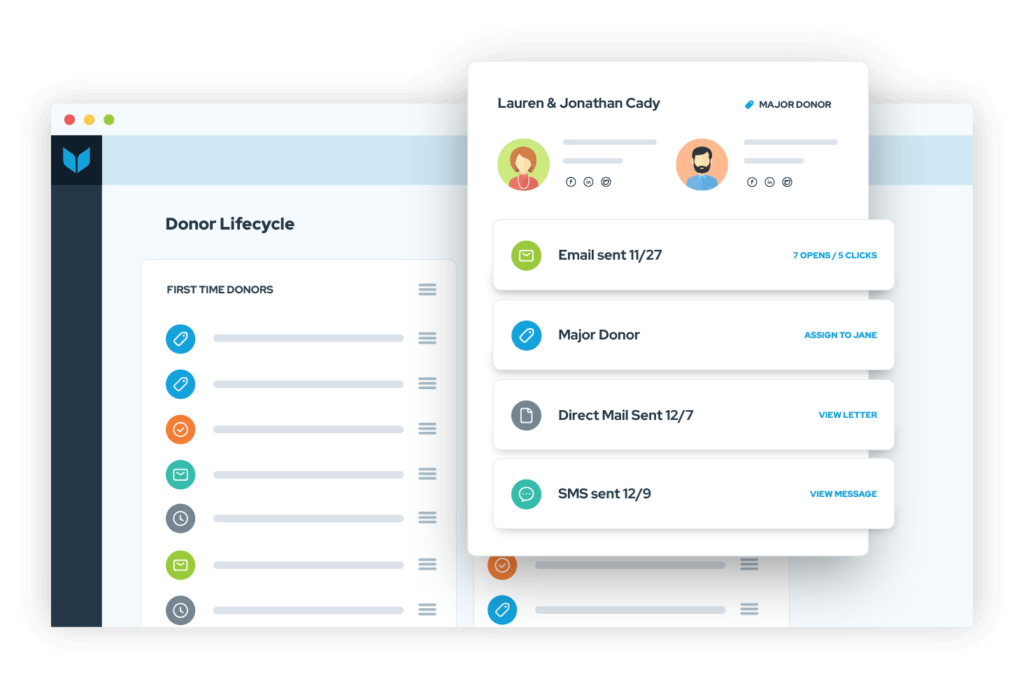
Nonprofit Alternatives for Google Optimize
Google announced that it plans to sunset Google Optimize in September 2023, meaning nonprofits must start looking for an alternative solution now. As a nonprofit organization, your website plays a
Connect with all donors personally
Optimize action with real-time data
Optimize action with real-time data
Insights to retain and engage donors
Make online giving more personal
Personalize events for better results
Business intelligence and analytics
Custom online giving experiences
Mobilize volunteers to grow your mission
Deliver powerful, modern donor management that increases your impact
Increase ROI with a HIPAA-compliant platform designed to unlock growth
Strengthen your institution to build long-term alumni engagement
Engage, personalize, and steward your community and cause
Your one tool to recruit, engage, and connect supporters with your mission
Curate supporter experiences from registration to cultivation
See what success with Virtuous looks like
The responsive approach builds trust and loyalty through personalized engagement
Virtuous gives you the CRM, fundraising, volunteer, and marketing tools you need
Virtuous is a software company committed to helping nonprofits grow generosity
We’re here to make sure you get the most from your technology investment
Extend the value of Virtuous by connecting with a trusted Technology or Solutions partner
Thought leadership, tips, and tricks for responsive donor engagement
Insights, trends, and in-depth analysis
Where nonprofit leaders come to talk
Guides, reports, and best practices
Learn, network, and grow with us
Learn how to use Virtuous and prove your expertise
Nonprofit Marketing focuses on strategies and tactics used by nonprofit organizations to communicate their missions, engage with stakeholders, and mobilize resources toward their causes. Unlike commercial marketing, which primarily aims at driving sales and profits, nonprofit marketing emphasizes storytelling, community engagement, and advocacy to inspire support and action for social, environmental, or cultural objectives. It seeks to build meaningful relationships with donors, volunteers, and the communities served, leveraging a mix of traditional and digital channels to maximize impact and reach.
When comparing Nonprofit Marketing to Traditional (or commercial) Marketing, several key differences stand out, rooted in their distinct objectives, strategies, and measures of success:
Primary Goals:
Target Audience Engagement:
Success Metrics:
Messaging and Content:
Budget Constraints:
Regulatory and Ethical Considerations:
A comprehensive marketing plan is pivotal for any nonprofit, serving as the backbone for effectively communicating its mission, engaging with diverse stakeholders, and driving toward its goals. It offers a strategic blueprint that guides promotional efforts, ensuring they are aligned with the organization’s core objectives.
This alignment is crucial for judiciously allocating limited resources, maintaining consistent messaging across various channels, and achieving a cohesive brand identity that resonates with donors, volunteers, and the communities served.
Moreover, a well-structured marketing plan enables nonprofits to measure the impact of their initiatives, adapt to the dynamic marketing landscape, and enhance their visibility in a crowded space. In essence, it’s not just about spreading the word; it’s about fostering meaningful connections and advancing the cause with intentionality and precision.

Google announced that it plans to sunset Google Optimize in September 2023, meaning nonprofits must start looking for an alternative solution now. As a nonprofit organization, your website plays a

For most nonprofits, email is a major part of Giving Tuesday. If your inbox gets as crowded as mine does this time of year, you may think that the global

As a fundraiser, do you truly understand why your donors give to your organization? In this episode of The Responsive Weekly, Angel Aloma of Aloma Fundraising Strategies joined Erik Tomalis

How do you inspire your supporters to give? From Giving Tuesday to the end of the year, you’ll be communicating with your supporters a lot. How can you make sure

If you want to connect with your donors, build deeper relationships, and create a community of enthusiastic fans of your nonprofit, you have to reach out. Most of the time,

A successful nonprofit email has many parts. It has a subject line that draws attention, a message that sparks passion, a layout that’s easy to navigate, and a suggestion/call to

Cameron Ripley joins the Responsive Fundraising podcast to discuss the latest trends in nonprofit marketing. During our conversation we discuss the lessons learned from hundreds of nonprofit marketing campaigns in

Whenever nonprofit professionals talk about fundraising and communications, it doesn’t take long for one organization to come up as a shining example. Since its founding, the clean water nonprofit has

Looking for better donor engagement? It’s time to rethink conventional wisdom. In this webinar, we’re joined by American Philanthropic principal partner and author of “The Forgotten Foundations of Fundraising,” Jeremy